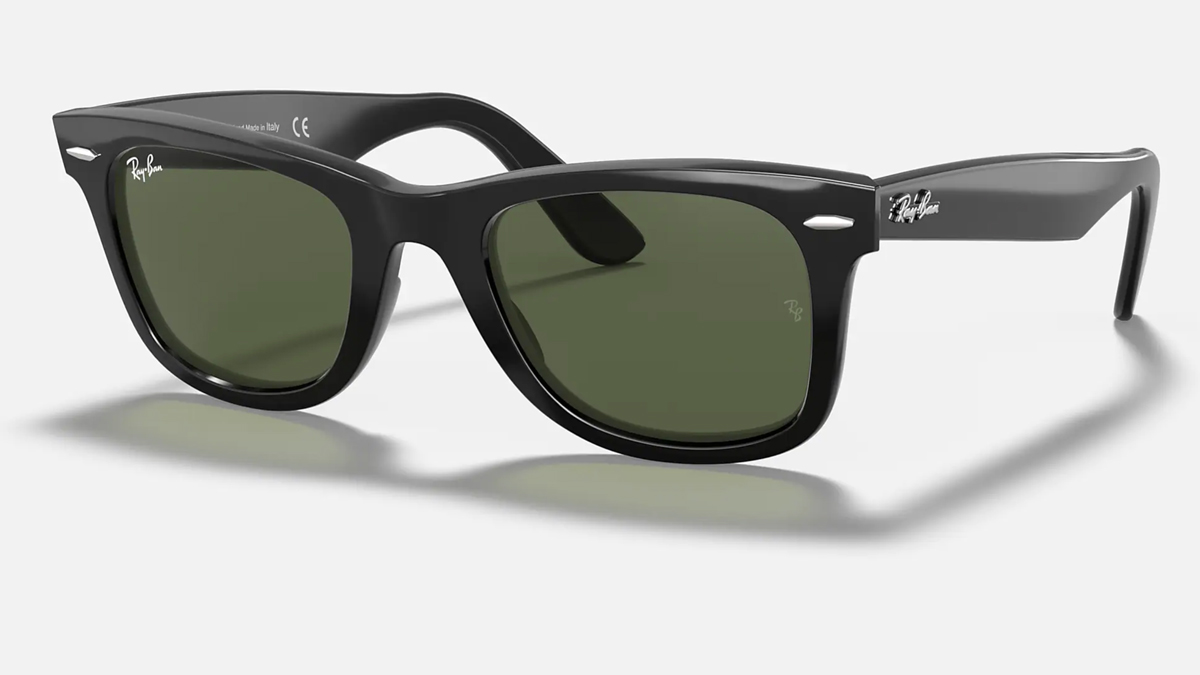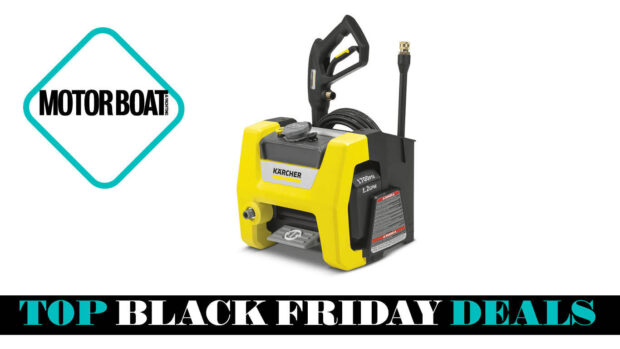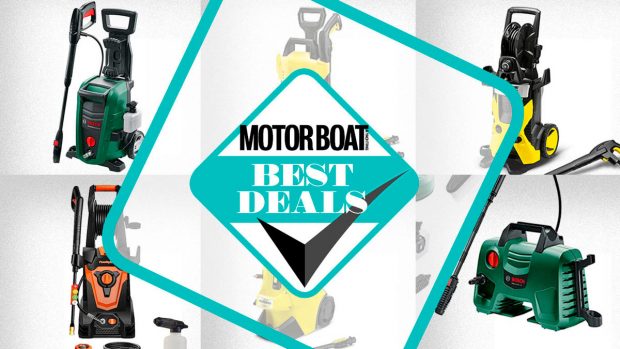Quality sunglasses are an essential investment in protecting your vision on the water. Here’s how to find the best sunglasses for your boating lifestyle.
Sunglasses are often viewed as primarily a fashion statement, but to find the best boating sunglasses, you should consider vision health, safety, and sharpness as much as style.
There are a few critical options to think about when it comes to protecting your eyesight at sea. These include lens tint, coating, and materials, which in turn affect light transmission, ultraviolet protection, and impact resistance.
In other words, the frame style is less important than performance, except for boaters and anglers who may want wraparound sunglasses to minimize light leaks at the temples and heighten visual acuity.
New to boating sunglasses? Read our explanation of what to look for
Looking for gifting inspiration? Check out our guide to the best Christmas gifts for boaters
8 of the best boating sunglasses on the market
Costa Del Mar 580P/G Fathom
Best boating sunglasses for general use
The Fathom is a stalwart of the Costa Del Mar line. Incorporating Costa’s proprietary 580 lens technology, it is available either in polycarbonate or glass (580P or 580G).
The Fathom features an oval to slightly cat-eye shape with frame vents that prevent fogging and a scratch-resistant lens coating.
This is a medium-sized frame that looks good on just about anyone, although it is less well-suited to a narrow or large head shape. There are men’s and women’s versions.
The Fathom is available in blue or green tints with a VLT rating of about 10%, which makes it ideal for bright conditions, such as boating.
Reasons to buy
• A time-tested design suitable for any activity.
• Lightweight and rugged frames.
• Reasonably priced high-end sunglasses.
• Low VLT rating (10%) to block light and reduce glare.
Reasons to avoid
• Frame style may be too tight for wide faces.
• The glass lens version is slightly heavier than polycarbonate.
RRP: £135/$177
Note: We may earn a commission when you buy through links on our site, at no extra cost to you. This doesn’t affect our editorial independence.
Smith Optics Guide’s Choice
Best boating sunglasses for blue water
Offshore boating demands reliable kit, and the Smith Optics Guide’s Choice brings best-in-class performance to the task.
The glass lens is super vivid and incorporates Smith’s ChromaPop technology, which means it separates primary colours (red, blue, green) for better definition.
It is available in a wide array of lens colours, but offshore conditions often call for a blue or green tint. For extra protection, mirrored coatings are beneficial on the brightest days.
Padded nose and temple components mean all-day comfort, and spring hinges adjust to a variety of face shapes.
In eyewear, base curve is a measurement of frame curvature. The Guide’s Choice has an 8-base curve, which is to say it offers a medium wraparound contour for a snug, light-blocking fit.
Reasons to buy
• Available in an extra-large frame.
• There is a bifocal lens option.
• Heavy-duty sunglasses.
Reasons to avoid
• High-end shades with a high-end price.
• The wraparound frame does not fit a narrow face well.
RRP: £151/$199
Peppers Cutthroat Polarized Sport Sunglasses
Best boating sunglasses on a budget
A pair of sunglasses that retail for less than $50/£40 might not be your primary shades, yet it is always wise to keep an affordable backup pair in the console.
Sure, the Peppers Cutthroat lens is plastic, but it is polarized and reportedly very scratch resistant.
The lens features a UV-protection coating, and the large, wraparound frame blocks wind and prevents light leaks at the temples.
The Cutthroat is available in several lens tints and frame colors and is best suited to a large face shape. Most importantly, they float!
Reasons to buy
• Very affordably priced sunglasses.
• Floating foam insets make them buoyant (if not unsinkable).
• Full UV protection.
• Comes with a hard-sided case and lanyard.
Reasons to avoid
• Visual acuity is not on par with high-end sunglasses.
• Less suitable for a narrow face.
RRP: £30/$39
Costa Del Mar Tuna Alley
Best boating sunglasses for anglers
Offshore anglers need their sunglasses to do one thing especially well — reduce glare. Whether you are pulling baits offshore or casting plugs in the bay, you need a lens that will enhance contrast and penetrate the water.
The Tuna Alley is Costa’s most advanced product, featuring a 580 glass lens for ultimate clarity and performance.
The rectangular frame offers more coverage than a rounded lens, and the temples are extra wide to block out ambient light.
Like the popular Fathom, the Tuna Alley also incorporates a series of vents to reduce fogging. It is available in multiple lens tints and frame finishes.
Reasons to buy
• A solid build that will stand up to offshore boating and fishing.
• Wide lenses offer excellent coverage.
• Lightweight despite their overbuilt quality.
• Available with either glass or polycarbonate lens.
Reasons to avoid
• May appear too bulky for a smaller face shape.
• The glass lens versions are very pricey.
RRP: £142/$187
Maui Jim Ho’okipa
Best boating sunglasses with lightweight frames
Although most boating sunglasses sport a frame with wide temples to block light, rimless shades are a good choice for someone looking for lightweight versatility at sea as well as on land.
Maui Jim’s Ho’okipa thin nylon frames reduce weight without sacrificing durability.
The polycarbonate lens is shatterproof with a VLT rating of 20%. Consequently, the Ho’okipa’s moderate light-transmission property makes for a good all-around lens.
While the Ho’okipa is available in multiple lens colors, the manufacturer’s Blue Hawaii tint is a great choice for boaters, especially in saltwater.
Reasons to buy
• Lightweight frames reduce fatigue.
• A moderate wraparound style offers good eye protection.
• Rubberized nose pads for comfort.
• Unisex frames are suitable for men or women.
Reasons to avoid
• More delicate than full-frame sunglasses.
• Fairly expensive.
RRP: £152/$199
Smith Redding Low-Light Ignitor
Best boating sunglasses for low light
The most popular lens tints of blue, gray, brown and bronze work great in most conditions, but in low light you need a specialty lens that provides greater contrast and depth perception.
This usually means amber, rose, yellow, or even copper to provide greater definition at twilight and in overcast or foggy conditions.
Look for a high VLT rating that allows the maximum visible light through the lens while still affording protection. A VLT of 25% to 35% will get the job done.
Good low-light lenses also offer eye protection in conditions where you might otherwise not opt to wear sunglasses, such as early morning boating or fishing.
Reasons to buy
• A lightweight and durable frame.
• Glass lens for ultimate clarity.
• Available in prescription lenses.
Reasons to avoid
• A specialty lens that is not optimal in bright conditions.
• Expensive for a pair of single-purpose sunglasses.
RRP: £110/$140
Smith Parallel Max 2
Best boating sunglasses with interchangeable lenses
Staying on the water for extended periods ensures that you will encounter variable conditions, and interchangeable lenses make it possible to quickly adapt to shifting light.
While not as convenient as photochromic lenses that automatically darken or lighten in response to brightness, interchangeable lenses are fixed tints that you manually swap out.
The advantage is that you are not limited to one color range, and as a result, you can have as many lens tints as you are willing to invest in. That is a great option when you know a certain day is going to be predominately overcast and the next mostly sunny, or vice versa.
Interchangeable lenses also offer cross-functionality between boating and other outdoor activities, from biking and golf to tennis or trap shooting.
Reasons to buy
• Ability to swap lenses from one day to the next.
• Lightweight rimless frames.
• Smith’s Ignitor lens is excellent in low light.
• Medium to large frame style fits most face shapes.
Reasons to avoid
• Replacement lenses are $30 to $60.
• Interchangeable lenses can loosen in their frame over time.
RRP: £114/$149

Ray Ban Original Wayfarer Classics
Best boating sunglasses for stylish seafarers
There is hardly a more timeless frame style than the Ray-Ban Wayfarer, which has been a worldwide hit since it was introduced in the early 1950s.
Yet that fashion-forward look is also perfectly suitable for watersports. Wide temple arms and large frames provide excellent sun protection and light blockage, while the glass lens offers exceptional clarity.
The frame comes in either a black or tortoiseshell finish, with multiple lens colors. It is also available in non-polarized versions or with mirrored coatings for extra glare reduction.
The Wayfarer is a unisex frame, which means it is available in various lens widths for both men and women.
Reasons to buy
• A classic fashion frame that is also suitable for boating.
• Generous lens coverage in multiple sizes.
• 100% UV protection.
• Glass lens for heightened visual acuity.
Reasons to avoid
• Not really a sport frame (but who cares, right?).
• Beware of counterfeits. Most genuine Ray-Bans are made in Italy.
RRP: £124/$16
What to look for in the best boating sunglasses
Overall, lens color is the first practical consideration. A dark lens (gray, brown, blue) is better for bright days, and a light-coloured lens (amber, rose, gold, yellow) is more suitable for low-light conditions, such as fog or twilight.
Gray lenses significantly reduce glare, so they are a good all-purpose choice suited to bright inshore or freshwater conditions. Boaters headed offshore, on the other hand, usually prefer a blue or green tint.
Lenses with a mirrored coating provide additional protection from bright sunlight, and other coating options may include UV protection and scratch resistance.
A frame with interchangeable lenses offers the greatest versatility, but it can be cumbersome to keep up with spare lenses.
Photochromic sunglasses change tint with brightness, which means they spare you the hassle of swapping lenses.

Quality sunglasses are essential for a day on the water. Photo: Alamy
As for lens material, glass provides superior clarity but less impact protection. Synthetic lenses, such as polycarbonate, offer a balance between sharpness and safety.
There are two common lens designations to look for. Firstly, consider the Visible Light Transmission (VLT) rating, which defines the percentage of visible light that can pass through a lens.
VLT numbers below about 20% are best for bright light, while higher numbers allow more light for overcast conditions.
Secondly, any pair of sunglasses worth owning should have a UV protection rating of 99% to 100%.
Fully polarized lenses are the norm for boating use, except in cases where they could interfere with polarized LCDs or instrument screens. The two polarizing surfaces can cancel each other out, making screens appear dark.
What are polarized lenses and how do they work?
The majority of modern sunglasses are polarized, but what exactly does that mean? In simplest terms, a polarized lens filters out light waves that are oriented in a given plane or polar axis.
Think of the snow-blinded explorer cutting narrow slits in a scrap of cardboard or patch of duct tape to fashion a pair of survival sunglasses. His makeshift eyewear has the same general effect as a polarized lens.
This is because, in their original state, light waves are chaotic and multidimensional. But when reflected off of a flat surface, such as a snowfield or the water’s surface, the waves can organize into a unified plane or axis.
Polarizing filters (and narrow slits) block rays that are not oriented parallel to their own axis. Like trying to push a key into a keyhole sideways, it’s a no-go. The result is reduced glare and eyestrain.
Despite their advantages, polarized lenses are not always preferable as boating sunglasses. LCD screens and even tinted windows can have their own polarization that effectively blocks all light when also viewed through a pair of polarized sunglasses. But for everyday protection out on the water, polarized lenses are the way to go.
Didn’t find what you’re looking for? Head to Amazon’s dedicated boating page for more marine products.

















